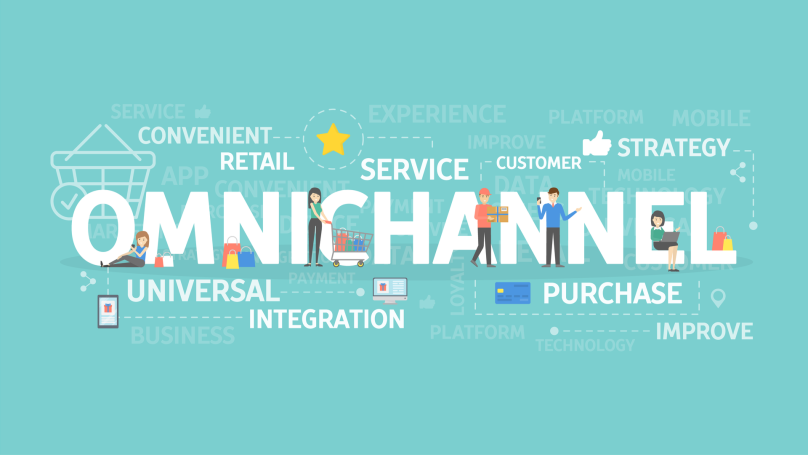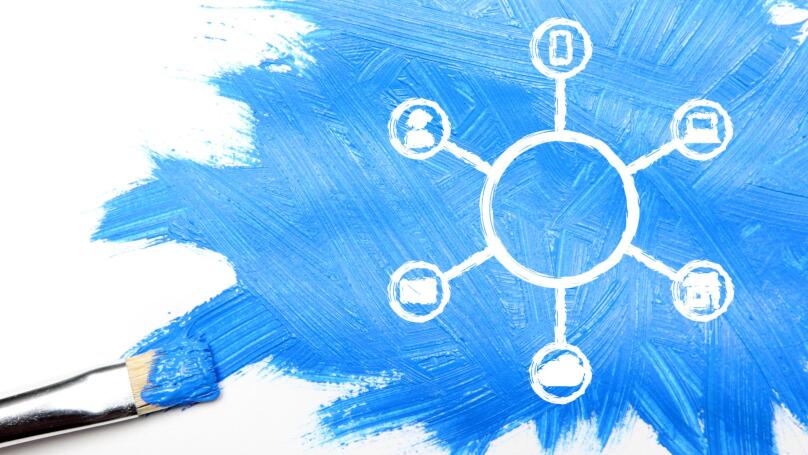What is omnichannel and what is the definition of omnichannel
Omnichannel is a model that connects various channels of communication with the client and combines them into a single system. The main principle of omnichannel is an integrated approach and a shift in focus from a specific channel or traffic to the user experience and customer journey. Part of the term "omni" in translation from English means "all together", from which, accordingly, the definition is formed. In simple words, omnichannel means that all marketing channels work as one, affecting the buyer in the same way and bringing him to the purchase stage with the same efficiency.
What is omnichannel for?
The main goals of omnichannel are to make the customer journey more accessible and create a positive customer experience. A retailer or an online business does not just use various channels but collects all the data together to make the customer's life easier and better with their help. Thus, omnichannel is convenient for customers and profitable for companies. Buyers get the opportunity to choose their own communication channel, based on their preferences and tasks, and this personalizes their interaction with the business.
Also, omnichannel allows businesses to optimize their marketing costs, close deals faster, increase the number of repeat sales and increase customer loyalty (personalization of interactions helps with the latter). A vivid example of omnichannel: a person places an order on the site, calls the company a couple of days later to find out its status, and the operator immediately addresses him by name.
Omnichannel strategy
 |
| What is Omnichannel Marketing? Definition, Tips, and Examples |
Omnichannel means using multiple channels at the same time. Thus, the omnichannel strategy includes an omnichannel approach to communicating with the audience using offline interaction (usually sales and support) and online tools. An omnichannel strategy is especially important for large companies with a large audience, as it can be used to reach all existing segments of the target audience and thereby maintain the brand's position in the market. Omnichannel also helps to manage projects and can be used in completely different niches, for example, in a bank.
Omnichannel vs Multichannel: What's the Difference?
Omnichannel is a seamless system of interaction within which a client can seamlessly move from one communication channel to another without interrupting the dialogue with the company, while maintaining the history of messages, their status, etc. Multi-channel is the use of many channels independently of each other. A company uses an omnichannel contact center, email correspondence, and chat, but without a single structure and database.
Thus, the key difference between omnichannel and multichannel is the continuous communication of channels and the ability to contact the client with maximum convenience for him and with maximum benefit for the company. These features of the omnichannel concept make it preferable to multichannel.
Omnichannel in sales
All modern CRM systems have a feature that can provide omnichannel sales. Thus, the collection of applications for placing an order enters the database immediately from a variety of channels: through a form on the website, through a basket, through a lead form, through a call to the operator, through personal messages on social networks, etc. So customers make purchases faster and easier, because they do not need to go from the company's Instagram page to its website to place an order, or they have to make a phone call in person.
Here’s what omnichannel selling looks like in practice in e-commerce:
- The client gets to the company's website through contextual advertising and asks a consultant a question in an online chat to select the right product.
- The chat manager conducts a consultation and, if the client is satisfied with everything, contacts him by phone to clarify the details of the order.
- At the end of the conversation, the client receives an SMS on the phone with fixed agreements, terms, order details, and a payment link (if the company makes payments in this way).
- By e-mail, the client receives information about related products that will fit his previous order.
- The manager then contacts the client via WhatsApp if there are any questions or promotions.
Omnichannel Marketing
 |
| What is Omnichannel Marketing? Definition, Tips, and Examples |
An omnichannel system in marketing is a combination of different marketing channels to influence the client and achieve a specific result. For example, email marketing, push messages, social media advertising, and retargeting all work together to get a potential customer to click through to your site and complete the checkout. As a rule, an omnichannel approach in marketing is always outbound communication, that is, a company contacts customers and not vice versa.
In practice, omnichannel marketing looks like this:
- A customer bought a scratching post for their pet at a convenience store and registered a bonus card in the process to receive a discount. Thus, his number and data got into the database of the store.
- A couple of weeks later, the store sends him an email newsletter with a Christmas sale of cat food and a few other items, which will allow the store to better understand the interests of a new client.
- The client only clicked on the link leading to the feed. Consequently, over the next few days, the store shows the client on Facebook and in the search engine advertising their own food.
- A month later, the client receives a personalized offer on WhatsApp to buy 2 kg of feed for the price of 1 kg.
Thus, omnichannel promotion is carried out.
Omnichannel analytics
Analytics is what any business marketing strategy is built on. Specifically, in omnichannel, analytics allows you to study the interests of the client to understand which offer will really interest him. To do this, we analyze the data collected by omnichannel communications connected in business. With the help of analytics, it is also necessary to monitor how the audience reacts to certain advertising campaigns and offers, and to omnichannel itself if it contains errors or shortcomings. Omnichannel analytics uses CRM data, omnichannel ranking, call tracking, end-to-end analytics, and suggestive algorithms that show users only relevant offers based on their preferences.
The distribution system, logistics, trading environment, and product distribution all also depend on the data collected in the omnichannel analytics process.
Implementation of omnichannel
 |
| What is Omnichannel Marketing? Definition, Tips, and Examples |
How do companies achieve omnichannel? The implementation of omnichannel takes place in several stages:
1. Development of a strategy for transition to an omnichannel model. To do this, you need to answer the questions:
- What channels can be integrated, to begin with, to spend the least resources on this?
- What data do you want to receive from them?
- How and for what will you use this data?
2. Education and preparation of employees for the use of omnichannel.
- Who is responsible for which channel?
- How many employees should be in the state to ensure the effective operation of the omnichannel center?
- How do motivate them?
- How to build their training in omnichannel technologies?
- How do you ensure that they have access to all relevant company information?
- What KPIs should they follow?
3. Selection and implementation of omnichannel technologies.
- What technologies are needed to implement omnichannel?
- Are there any special requirements for them?
- On what basis will tools, solutions, and technologies be selected?
4. Development of a marketing campaign and notification of customers about new services and sales channels.
- How do you notify customers about new ways to interact?
- How to motivate them to use new channels?
- How and with what help to analyze their experience to adjust the omnichannel strategy?
When expanding communication channels, it is worth relying on the preferences of the audience itself and which channels are more familiar and convenient for them to use.
Omnichannel Tools
 |
| What is Omnichannel Marketing? Definition, Tips, and Examples |
Here are some omnichannel tools and services that enable omnichannel development that you can use:
1. Sales Force Social Hub. An online hub with which you can provide quick feedback and customer engagement. Initially, the program was developed to scale companies, monitor different communication channels, and collect audience data, so omnichannel with Salesforce considers analytics.
2. crowd booster. Social media analytics with automated offers to help your business expand its online presence. This service is actively used and promoted by the well-known American ice cream company Ben & Jerry's.
3. Userlike Live Chat. Software for integrating live chat into the site, which will allow you to easily respond to your customers' inquiries and provide them with additional information about the company and products.
4. Talkdesk. Call center software is ideal for small and medium businesses due to its budget and convenience. This tool allows you to track customer interactions and can integrate with most CRMs (for example, Salesforce).
Helpshift. An omnichannel platform for customer service and support through mobile applications.
Examples of omnichannel
An example of an omnichannel is the American coffee chain Starbucks. The company has introduced a system of personal cards for its customers, which can be used to pay in a coffee shop like a credit card, replenishing the balance through an offline cash desk, mobile application, or website. The coffee shop also allows guests to independently choose through the application the music that will be played in the coffee shop they visited, and order coffee to the name specified in the profile.
What does omnichannel look like in retail? Timberland clothing and footwear brand. The company generates personal offers for customers based on information about their purchasing behavior, and at offline points around the world. In any store, a client can take a tablet to independently view the goods in stock, check the dimensions, characteristics of the goods, etc. Browsing data is stored and recorded, and used in email newsletters.


Comments
Post a Comment